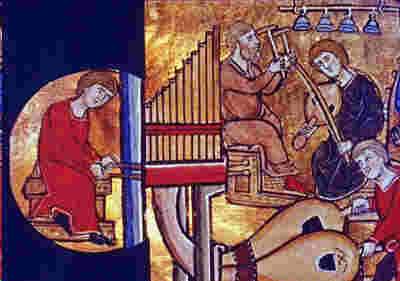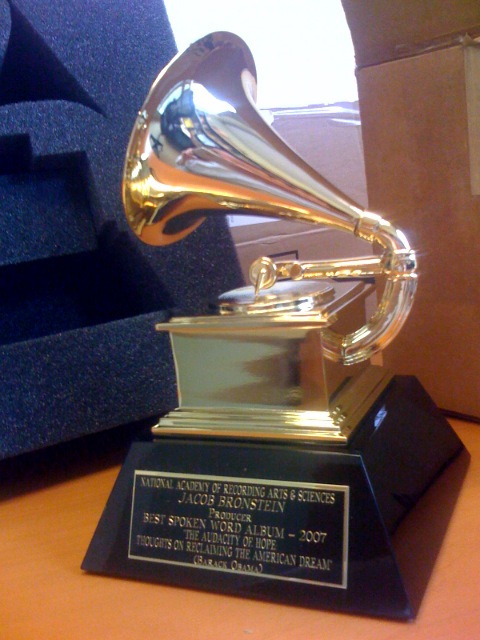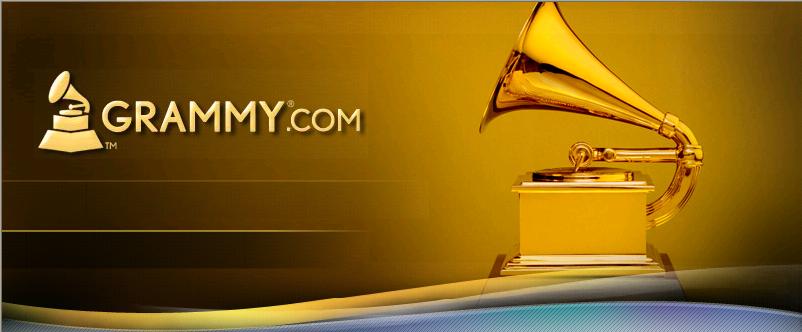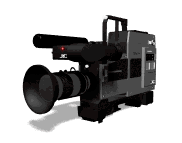

|
| |||||||||||||||||||||||||||||||||||||||||||||||||||||||||||||||||||||||||
|
|||||||||||||||||||||||||||||||||||||||||||||||||||||||||||||||||||||||||
|
| |||||||||||||||||||||||||||||||||||||||||||||||||||||||||||||||||||||||||

the grammies
| |||||||||||||||||||||||||||||||||||||||||||||||||||||||||||||||||||||||||
|
—note— current LARAS awards Current LARAS awards are not posted with current Grammy awards on the Annual Grammy Awards Winners List for the current year. |
Grammies aren't the only honors and awards handed out by the Recording Academy. NARAS also recognizes contributions to music and other activities of significance to the recording field that fall outside the framework of the Grammy Awards categories.
In each instance of an award, below, click the name of the award to see a list of award recipients at the Grammy.com web site:
Lifetime Achievement Award—A Special Merit Award presented by vote of the Recording Academy's National Trustees to performers and, in some cases non-performers, who, during their lifetimes, made creative contributions of outstanding artist significance to the field of recording.
Trustees Award—A Special Merit Award presented by vote of the Recording Academy's National Trustees to individuals who, during their careers in music, made significant contributions other than performance to the field of recording. Includes some performers.
Technical GRAMMY Award—A Special Merit Award presented by vote of the Recording Academy's National Trustees to individuals and/or companies who have made contributions of outstanding technical significance to the recording field.
GRAMMY Legend Award—A Special Merit Award is presented by the Recording Academy to individuals or groups for ongoing contributions and influence in the recording field.
GRAMMY Hall of Fame Award—Honors specific recordings of lasting qualitative or historical significance that are at least 25 years old. Inductees are selected annually by a special member committee of eminent and knowledgeable professionals from all branches of the recording arts.
If you like recorded music, this list is a must-see; there are scads of hits you'll remember fondly, even passionately.
Latin GRAMMY Awards—Like the Grammy Awards, the Latin GRAMMY Awards recognize artistic and technical excellence in the recording arts and sciences by peer vote. theyrepresent achievement in the recording of Latin music.
- If you have not already done so, you may want to explore LARAS, the Latin Academy of Recording Arts & Sciences. See above on this page: click here.
- If you have not already done so, you may want to look up LARAS awards, award winners, and categories now at the Grammy.com web site: click here.
Latin GRAMMY Hall of Fame Award—he Latin GRAMMY Hall of Fame was established in 2001 to honor early Latin recordings of lasting qualitative or historical significance. Winners are selected annually by a special member committee of eminent and knowledgeable professionals from all branches of the recording arts.
- If you have not already done so, you may want to explore LARAS, the Latin Academy of Recording Arts & Sciences. See above on this page: click here.
At the right, above, near the top of this page, is a picture of a typical gramophone of the early sound recording and playback era of the 1910s, 20s, and 30s, prior to the invention and introduction of electronic amplification. It's the kind of gramophone that might appear in a home. Back then, it was the way to record and play back music.
At the left is an idealized image of the Grammy award as the National Academy of Recording Arts and Sciences likes to picture it. Notice the similarity between the design of a real gramophone at the top of this page and the illustration that symbolizes the Grammy Awards.
 Notice,
too,
the dramatic, romantic, ethereal lighting effects in the picture at the left. With all the attention
given to this symbol, clearly the Academy attaches great importance to images
like this one. To the Academy and to the great body of Grammy award-winners,
it's safe to say that the golden gramophone is far more than a mere picture
or a chunk of gold-plated brass on a wooden stand; it's essence is what
images like this one represent: excellence in music and performance.
Notice,
too,
the dramatic, romantic, ethereal lighting effects in the picture at the left. With all the attention
given to this symbol, clearly the Academy attaches great importance to images
like this one. To the Academy and to the great body of Grammy award-winners,
it's safe to say that the golden gramophone is far more than a mere picture
or a chunk of gold-plated brass on a wooden stand; it's essence is what
images like this one represent: excellence in music and performance.
The gramophone is the symbol of the Grammies. By displaying the gramophone as its icon, the National Academy of Recording Arts and Sciences packs a lot of symbolism into a small package. To fully appreciate why this is the case, it helps to explore the early recording technology behind the device.
Here's how real gramophones like the one pictured at the top of this page worked:
To hear a recording, a record—most often a bituminous playback disk coated with shellac—was placed on a turntable driven by a hand-cranked spring motor. Once started in motion, the rotating turntable moved the record in a circle around a peg inserted in a hole at its center. The record rotated under a sound pickup head that contained a needle. A groove cut into the surface of the disc contained the recorded sound. The music began to play when the needle started tracking in the groove near the outer edge of the disc; the music stopped when the needle reached the end of the track, near the center of the disc.
Recording occurred at a recording studio prior to manufacture of a playback disc. There the groove was cut into the soft surface of a special disc called a recording master by a sharp, knife-like needle. At the studio, a band would play or a performer would shout or sing as loudly as possible into a so-called recording horn, a trumpet-shaped brass horn similar to the playback horn in a gramophone. Since this was an acoustical rather than an electric process, shouting was often necessary if sound volume at playback was to reach a practical level.
Transferring a singer's voice to the recording master worked like this:
The recording master was placed on a turntable called a recording lathe. The lathe and master disc were much like a gramophone turntable and a playback disc; they were approximately the same size and shape, and they revolved at roughly the same speed. As the lathe and disc rotated and the singer sang, the recording horn captured and amplified the singer's voice. Amplified sound was directed to a diaphragm that actuated a needle in the cutting-head, causing the needle to vibrate and to leave a trail of squiggles in the groove. The pattern of squiggles represented the singer's voice. In effect, the recording apparatus was a gramophone in reverse.
Copies of the master disc were later made, distributed, and sold.
- For a detailed description of how these devices worked, visit the page titled Birth Of The Film Industry—The Advent Of Motion Pictures, Page 7—An Overview Of The People And Events That Created The Film Industry—Sound On Film: click here.
From this description, it can be seen that the symbol of a gramophone harks back to and honors a long tradition of achievements in recording technology. For its time, the gramophone was quite an accomplishment. Edison invented the first sound recording device, based on a wax cylinder, in 1887. The first playback device built along the lines of the gramophone was made by a German firm just two years later.
The Grammy Awards image is based upon gramophones because gramophones ushered in a golden age of recorded music. By steps, the gramophone led to the invention of today's hi-tech sound reproduction systems. It turned music into a mass medium. It helped spark a revolution in the way all kinds of music are written, performed, distributed, marketed, and sold. It impacted, stimulated, and altered every medium that possesses an aural component. Because of it, eventually radio, Broadway, film, television—even computers and computer networks—are different than they might otherwise have become.
The recording industry owes much to the gramophone's invention; where would it be without it? the gramophone symbol acknowledges that fact.
The origin of the term Grammy has a brief explanation and a long one. The brief explanation is that Grammy is a shortening of the word gramophone. A gramophone, of course, is another word for a phonograph.
A complete story of how Grammy came to be is a long and winding road. We walk it in four steps:
Step 1
Grammy comes from gramophone; but how did the word gramophone originate? It originated with the word phonogram.
A phonogram, a word coined long before anyone was able to record actual sound, is a symbol which represents a unit sound written in a phonetic writing system. A phonogram represents a speech sound, syllable, or other sequence of speech sounds without reference to their meaning.
The word phonogram is made up of phono- is a combining form from Greek meaning sound or voice, and -gram, a combining form, also from Greek, meaning something written or a drawing such as an epigram or diagram. Literally, a phonogram is sound written on a medium like paper.
Edison came along in 1877 and invented what he called the talking phonograph, a device to record sound on cylinders. In coining the word phonograph, he was inspired by the word phonogram, but he needed something original—after all, he was an inventor. So he threw away the -gram in phonogram and substituted -graph.
Step 2
Why substitute -graph?
-graph is another combining form from Greek meaning drawn or written, as in lithograph or monograph. But -graph was better than -gram for Edison's purposes, even though both words are connected with writing, because -graph emphasizes the idea of the writing instrument rather than the written product of the instrument, as in telegraph or telephone. Thus, Edison came up with a word—phonograph—that put the emphasis where, in his opinion, it belonged—on the device he had invented.
In 1877 the telegraph, which had been invented by Samuel F. B. Morse in 1837, was in widespread use; and the telephone, which had been invented by Alexander Graham Bell in 1876, only a year before Edison's phonograph, was just getting started but was all the rage. Why not suggest a link between the phonograph and these other miracles by tagging on -graph?
Step 3
When others entered the sound recording business, they needed a word to describe their products. Phonograph seemed like a good word to use to describe sound reproducing devices, but it was taken by Edison.
Edison had shown the way, however. Like Edison, the newbies worked with the word phonogram. But how to alter phonogram so that it suggested the idea of sound reproduction—bringing sound to life—not merely writing sound on paper? The answer? Tie-in the word phone, of course. Phone means voice.
Thus, to these recording pioneers, gramophone suggested the idea of writing voice on cylinders. The term gramophone, coined in 1887, was formed by combining the words -phono and -gram to form phonogram, which literally meant a device to write voice. The word gramophone first appeared as the trademark of a now-defunct company that manufactured phonographic recording and playback cylinders.
Step 4
Grammy is a word copyrighted by the Recording Academy. Grammy is their abbreviation for gramophone.
According to the daily entertainment newspaper Variety, the Grammy Awards website, the name for music industry's highest honor came from a nationwide name the award contest in 1959. However, on February 5, 2009, Variety offered another version of the origin story that claims to be the true one. So it's not clear which story is correct.
Since the Variety story is no longer available online, The Muse offers yet another version of how the word Grammy got started, this one originating with the recently deceased (and sorely missed) comedian and writer Stan Freberg, who claims to have been present at a Variety Board of Director's meeting when the decision for a name was made. Here's Stan's version:
- See Stan Freberg's version of how the name Grammy originated. According to Stan, thereby today we have Grammy: click here.
 Ever
wonder how Grammy Awards are made—the statues, that
is, not the great music?
Ever
wonder how Grammy Awards are made—the statues, that
is, not the great music?
At the right is a photo of an actual Grammy, straight out of the box. It's only about a foot high; a person can hold it in comfortably the palm of one hand. You can get a rough idea of its size by comparing it with the shipping materials behind it.
On the award-night, winners receive nominal statues on stage that do not bear name plates with their names and awards inscribed on them. They receive a different statue that bears a name plate that cites their name and achievement after the award ceremony.
The picture of a Grammy statuette that's shown at the right is a photo of an actual statuette that was given to a real award-winner, one bearing a name plate. It shows what a real Grammy looks like on a winner's shelf.
If you enlarge the picture on your computer monitor, you may be able to read the name of the recipient and the achievement for which it was awarded. So far, about 8,000 statuettes like this one have been handed out.
 As
mentioned above in the section on the Significance of the Grammy Gramophone,
the golden gramophone is far more than a mere sculpture or a chunk of
gold-plated brass mounted on a wooden stand. The National Academy of
Recording Arts and Sciences uses pictures of the physical award as symbols of what the
Grammy's stand for.
As
mentioned above in the section on the Significance of the Grammy Gramophone,
the golden gramophone is far more than a mere sculpture or a chunk of
gold-plated brass mounted on a wooden stand. The National Academy of
Recording Arts and Sciences uses pictures of the physical award as symbols of what the
Grammy's stand for.
The picture on the left is an example of the kind of romanticized picture the Academy likes to use to advertise itself. Notice the dramatic lighting effects.
Compare the picture of a real statue at the right, above, with the idealized, romanticized picture of the statue on the left. Which one looks more glamorous?
 At the right is another stylized rendering of the statue;
it was
designed for the Grammy web site by a graphic artist. Notice that there are two
different, renderings of the award in this picture, one an sketch, the other
a glorified picture. They're both idealized abstractions of what a Grammy statue
actually looks like.
At the right is another stylized rendering of the statue;
it was
designed for the Grammy web site by a graphic artist. Notice that there are two
different, renderings of the award in this picture, one an sketch, the other
a glorified picture. They're both idealized abstractions of what a Grammy statue
actually looks like.
Which version of the statue do you think is more impressive—the real statue at the right, above, or the idealized representations? Is the real, physical award as glamorous as these stylized representations? Perhaps each version of the statue—the real statue or the idealized renderings—are equally impressive, each in their own way.
Grammy Foundation
The Grammy Foundation was established in 1989 to cultivate and advance the understanding, appreciation, and contribution of recorded music to American culture. It informs the public about past professional musicians and technical contributors and their contributions. It conducts programs and activities that engage the music industry and cultural community as well as the general public. And it bring national attention to important issues such as the value and impact of music and arts education and the need to preserve our cultural heritage.
- Explore the GRAMMY© Foundation at the NARAS web site: click here.
Grammy museum
Hey! Did you know that you can visit the GRAMMY Museumsm in person? There, you can explore the creative process, the art and technology of the recording
- For programs and visiting information or to buy tickets: click here.
MusiCares For Music People
MusiCares is a philanthropic organization that provides critical assistance to music people in times of need, including financial, medical and personal emergencies. MusiCares also focuses the resources and attention of the music industry on human service issues that directly impact the health and welfare of the music community.
- Explore the GRAMMY© Foundation at the NARAS web site: click here.

Interested in how recordings are made? Want to explore the history of recording?
In the feature called Recordings And Recording, Electricka and her muses jointly explore the state, nature, and practices of the recording field—past, present, and future. They line out their significance for the arts, and pay homage to the achievements of people who work or have worked in the field.
Subjects that are treated are not limited to music industry recordings, such as are treated by the Grammies. Electricka and her muses conduct this exploration together because recordings and recording of all forms are vital and common to all the arts.
...Coming.
|
|
Search this web site with Electricka's Search Tool:
tap or click here
Electricka's Theme Products
Shop At Cafe Press
This web site and
its contents are copyrighted by
Decision Consulting Incorporated (DCI).
All rights reserved.
Contact Us
Print This Page
Add
This Page To Your Favorites (type <Ctrl> D)


You may reproduce this page for your personal
use or for non-commercial distribution. All copies must include this
copyright statement.
—Additional
copyright and trademark notices—
| Exploring the Arts Foundation |
 |
| Today's Special Feature |
| Search Now |
| To Do | ||||||||||||
|
| To Do More |
| Our Blogs |
| Our Forums | ||
|
|
Resource Shelf |
| Related Pages |
| See Also |
| ETAF-Amazon |
|
|